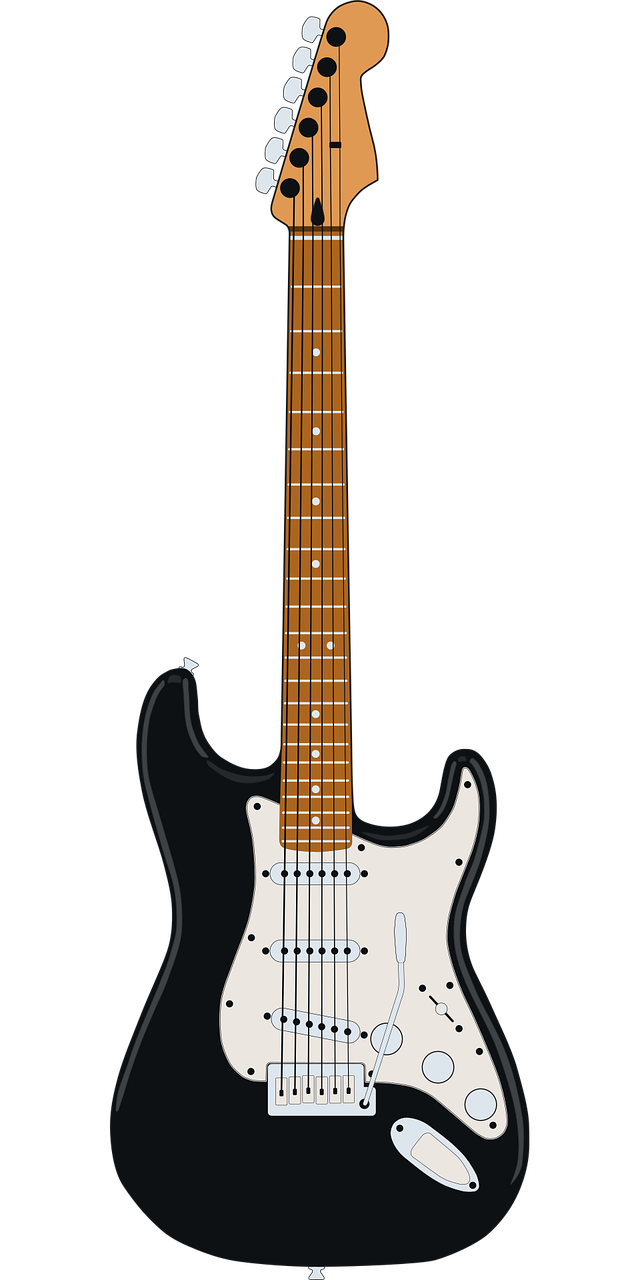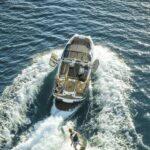When it comes to protecting your boat, understanding fenders can make all the difference. This article offers you a straightforward look at selecting and setting up Sentry boat fenders, ensuring you have the best protection against bumps and scrapes while docked.
You’ll discover easy setup tips and essential insights to help you navigate through the options available. Get ready to enhance your boating experience with simple strategies that keep your vessel safe and sound.
Understanding the Importance of Boat Fenders
Boat fenders, often referred to as bumpers, might not be the most glamorous topic in the boating world, but they play a pivotal role in keeping your vessel safe and sound. Whether you’re a seasoned sailor or a weekend warrior, understanding why fenders are crucial for your boat can save you a lot of headaches down the road.

What are boat fenders?
Boat fenders are cushions made from materials such as vinyl, foam, or rubber, designed to absorb the impact of your boat hitting another vessel or a pier. They act as a buffer between your boat and the surrounding structures, minimizing damage during docking or mooring situations. You’ll typically find them hung over the side of your boat, ready to protect your vessel from the occasional bumps and scrapes that can occur in busy marinas or during windy conditions.
Why are fenders crucial for boat protection?
The importance of fenders cannot be overstated. They help protect not only your boat’s hull from scratches and dents but also prevent potential damage to adjacent vessels or docks. A well-placed fender can absorb the force of an impact, allowing your boat to glide gently against another surface instead of colliding harshly. Without fenders, you run the risk of costly repairs that can dampen your boating experience.
Common scenarios where boat fenders are essential
There are several situations where having boat fenders is a necessity. Whether you’re docking at a crowded marina, anchoring in a busy bay, or navigating through rough weather, fenders are your first line of defense. They help cushion your boat against the dock when you come in for a landing, shield it from waves crashing against the hull, and protect it from other boats during tight maneuvering. Essentially, whenever you’re near another object or vessel, you’ll want to ensure you have fenders at the ready.
Types of Sentry Boat Fenders
Boat fenders come in various shapes and sizes, each with their own suited purposes. Knowing about the different types of fenders available will help you make the best choice for your specific boat and usage.
Inflatable fenders
Inflatable fenders are lightweight and easy to store, making them a popular choice. They can be deflated when not in use, allowing for compact storage, and they provide excellent impact absorption. When they’re inflated, they can withstand considerable force, making them great for everything from small day boats to larger vessels.
Foam fenders
Foam fenders, on the other hand, are filled with closed-cell foam that makes them extremely durable and resistant to wear and tear. They do not require inflation and are nearly indestructible, which is ideal for high-impact situations. They are also great in marine environments as they are not prone to damage from UV rays, saltwater, or messy spills.
Solid fenders
Solid fenders are made from tough rubber or other resilient materials and are designed to withstand harsh conditions. These fenders offer the highest level of durability but can be heavier and less versatile than inflatable or foam options. They are best used in busy environments where abrasion and extreme force are a concern.
Specialized fenders for different boat types
Lastly, specialized fenders exist for various types of boats, including sailboats, motorboats, and yachts. Sailboat fenders might be designed to hang more vertically, while those for motorboats might be wider to accommodate unique shapes. Choose fenders that fit your specific vessel type to maximize protection.
Choosing the Right Fender Size
Selecting the right size of fender is essential for effective protection, and you’ll need to consider a few factors before making your final decision.
Factors affecting fender size selection
Some key factors include the weight and length of your boat, as well as the types of docking environments you typically encounter. A heavier boat will require larger, thicker fenders to absorb impacts effectively, while a lighter boat may get by with smaller fenders. Additionally, consider whether you often dock in crowded marinas or remote anchorages; busier areas may necessitate bulkier, more robust fenders.

How to measure your boat for fender sizing
To measure your boat for the right fender size, consider the following method: check the overall length of your boat and its beam (width). A good rule of thumb is to have one fender for every 4 to 5 feet in length of your boat. For example, if your boat is 20 feet long, two to three fenders should suffice. Don’t forget to consider the fender’s diameter too; wider fenders will be better for larger boats for better stability and impact absorption.
Recommended sizes for various boat lengths
As a general guide, here are recommended fender sizes for common boat lengths:
- Under 20 feet: 6 to 8-inch diameter fenders.
- 20 to 30 feet: 8 to 10-inch diameter fenders.
- 30 to 40 feet: 10 to 12-inch diameter fenders.
- Over 40 feet: 12 to 16-inch diameter fenders.
Always choose the fender size based on your specific boat requirements and the conditions you expect to encounter.
Setting Up Sentry Boat Fenders
Once you’ve chosen the right fenders for your boat, setting them up properly can enhance your protection during docking and mooring.
Essential tools and materials needed
To set up your fenders effectively, you’ll need a few essential tools and materials. These include:
- Your selected boat fenders
- Strong fender lines or ropes suitable for boating
- A fender knot or bowline knot (if you’re a fan of knots)
- A pair of scissors to cut the fender lines to size
- Optional: a fender rack for a more organized go-to storage solution
Step-by-step fender installation guide
- Determine the placement: Select the appropriate height for the fenders, typically just above the waterline.
- Adjust the height: Use a fender line to adjust the height of the fender. You want it to touch the dock or adjacent vessel lightly without putting too much pressure on it.
- Secure the fender: Attach it using a secure knot, ensuring it won’t slip off during use or become dislodged while you’re out on the water.
- Repeat for all fenders: If you have multiple fenders, repeat the steps for each fender, spacing them evenly based on your boat’s length and beam.

Common mistakes to avoid during setup
When setting up your fenders, avoid these common pitfalls:
- Placing fenders too low: This can lead to your hull making contact with the dock.
- Using weak ropes: Ensure your fender lines are strong enough to hold up against the forces experienced during winds or waves.
- Overlooking regular adjustments: Always check and adjust the positioning of your fenders periodically, especially if you’re in different docking situations.
Adjusting Fender Position for Optimal Protection
Once your fenders are installed, adjusting their positions becomes crucial for providing optimal protection.
How to position fenders on your boat
When positioning your fenders, aim to keep them as close to the dock side as possible without obstructing your boat’s lines for aesthetics or performance. Ideally, each fender should hang vertically, providing maximum coverage where needed. On larger boats, consider placing fenders at strategic points, such as near the bow and stern, to cover potential impact areas.
Adjusting for different docking conditions
Docking conditions can be unpredictable, so you’ll want to adapt your fender placement accordingly. If you’re heading into a tight marina space where you anticipate being pushed by wind and current, position your fenders slightly higher. Conversely, if you are simply tying up at a dock with calm water, you can lower them for stability.
Maintaining the right distance between boat and dock
The goal is to maintain a balance whereby your boat can float freely while the fenders do their job absorbing any impacts. Typically, you’ll want to keep around 6 to 12 inches between your boat and the dock to allow for slight movement due to waves, current, or wind.
Maintaining Your Sentry Boat Fenders
Proper maintenance of your fenders is essential for ensuring they last as long as possible and provide the best protection for your boat.

Cleaning and storing fenders properly
Regular cleaning is vital to prevent dirt and grime from building up, which can lead to staining or deterioration. Use mild soap and water and gently scrub any scuffs or marks before rinsing thoroughly. For storage, make sure your fenders are completely dry before putting them away; this helps prevent mold and mildew growth.
Regular inspections for wear and tear
Regularly inspect your fenders for signs of wear and tear, such as cracks, holes, or discoloration. Pay close attention to the fender lines or ropes—if they look frayed or weakened, replace them immediately to maintain the reliability of your fender system.
When to replace your fenders
If you notice that your fenders are losing air, are marked with dents or holes, or don’t provide the same protective capability they once did, it’s time for a replacement. Ensuring you have high-quality, functional fenders is critical to guarding your vessel against damage.
Enhancing Protection with Fender Accessories
To maximize the effectiveness of your fenders, consider investing in some helpful accessories that make usage even smoother.
Fender covers and their benefits
Fender covers are removable and easy to wash, which helps extend the life of your fenders. They come in various colors and styles, adding an aesthetic touch to your boat while providing added protection against UV rays and wear. Using covers can also help avoid those unsightly scuff marks that can arise from dock contact.
Fender ties and how to use them
Fender ties, or fender lines, are essential for securing your fenders in place. Look for lines that are resistant to UV rays and moisture. When tying your fenders, ensure the lines are equal lengths, allowing for balance when they are hanging. This will also prevent any unwanted swinging or tipping.
Mounting brackets and other helpful accessories
Mounting brackets allow you to store your fenders neatly when not in use, preventing them from rolling around your deck. You can also find various fender hooks and supports on the market, which can be handy for easily deploying or retrieving your fenders as needed.
DIY Fender Solutions
If you’re feeling crafty or want to personalize your fendering options, there are several DIY solutions you can explore.
Creating homemade fenders from common materials
You can create your own fenders using materials like old tires, pool noodles, or even large plastic bottles. Just ensure they are securely tied and adequately sized for your boat to keep functionality in mind. Just remember, the goal is to protect, so prioritize materials that will absorb impact effectively.
Customizing fenders for specific needs
Customizing your fenders can make your boating experience far more enjoyable. You can paint them, cover them with fabric to match your boat’s theme, or even add floatation devices for extra buoyancy. Innovative ideas can enhance both their practicality and aesthetics.
Benefits and drawbacks of DIY fender options
While DIY fenders can be cost-effective and unique, they may not always provide the same level of durability or safety as professionally manufactured fenders. Be careful when designing your options to ensure they meet safety standards and provide sufficient protection for your boat.
Sentry Boat Fender Safety Considerations
Prioritizing safety while using your fenders is key to ensuring a smooth and injury-free boating experience.
How fenders prevent accidents
Fenders act as a safety barrier, absorbing shocks and impacts during docking and mooring. They help to keep you and your passengers safe by minimizing the chances of sudden jolts that can occur if docking goes awry. When equipped properly, fenders reduce the probabilities of significant accidents as they create a buffer around your vessel.
Fender usage rules in different environments
Make sure you’re aware of your local regulations and guidelines regarding fenders. Some marinas may have specific fender requirements, particularly in crowded areas. It’s wise to adhere to these rules to avoid fines and ensure the safety of your vessel and others.
Emergency fender strategies
In the event of an emergency, be ready to quickly deploy additional fenders, particularly if winds or currents abruptly get stronger. Having extra fenders on hand or knowing how to quickly adjust their positions can safeguard your boat in challenging situations. Keep your tools handy for knot adjustments or to clear debris off your fenders as needed.
Conclusion
In summary, understanding the benefits and proper installation of boat fenders is crucial for protecting your vessel. By following the guidelines provided in this article, you can select and maintain the fenders that will best serve your boating needs.
Always remember to consider factors such as boat size, fender placement, and local regulations to ensure a memorable and safe boating experience. By investing time and resources in quality fender protection, you can enjoy peace of mind as you embark on your adventurous journeys across the water! So go ahead, make your boating safer and more enjoyable with well-chosen and maintained fenders. Safe travels on your aquatic adventures, and may your fenders guard your journey as efficiently as they were designed to!





